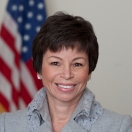
Last month, President Obama said in a speech in Chicago, “There is no surer path to success in the middle class than a good education.”
Today, I had the opportunity to speak at the Department of Education’s Higher Education Program Project Directors’ Meeting, which gathered thousands of people who work every day to ensure that more students receive a good education.
Project directors from across the country came together in Washington, DC to discuss how to better serve students in their three program and grant administration areas: Institutional Service (IS), which strengthens institutions that serve largely minority or low-income populations and first-generation college students; Student Service (SS), which works to provide academic preparation, support and career development; and Fund for the Improvement of Postsecondary Education (FIPSE), which seeks to help implement, evaluate, and share innovative reforms to improve productivity, efficiency, and completion in higher education.
Their work supports President Obama’s goal for the United States to again lead the world with the highest proportion of college graduates by the year 2020.
To reach this target, we project that the proportion of college graduates in the U.S. will need to increase by 50 percent nationwide by the end of the decade. That means that eight million more young adults will need to earn associate’s degrees, bachelor’s degrees, and postsecondary certificates by 2020.
President Obama is committed to increasing access, attainment, and affordability of higher education programs. His commitment to expanding educational opportunity is reflected in the largest investment in student aid since the G.I Bill, so that more students can afford college—he expanded tax credits to help families pay for college, doubled the number of Pell Grants, and led the call to keep student loan interests down.
These are lofty goals. But when I think about my own educational career, and what a difference it made in my own life, I want that for every single student in this country. The President wants it for his daughters. All parents want it for their children. Every child deserves a chance to thrive, contribute to society, and realize their dreams—no matter what their circumstances.
To illustrate this, I told the story of an amazing individual who benefited from one of these federally funded programs.
LaTisha, a young woman from Michigan, took part in the Upward Bound program. She initially had thought only to apply to local colleges. But with the encouragement, mentoring, and responsibilities given to her by the Upward Bound staff, LaTisha applied to most Ivy League schools and got into every single one. She went to Yale, where she gave back to the community by reaching out to local public school students and helping to coordinate a prison education program. Today, she is an elementary school teacher in Indianapolis.
For LaTisha and countless other students, the programs represented at the meeting gave them the tools and confidence to follow their dreams.
I was so inspired by her story, and by the work of all the attendees of the conference who make stories like LaTisha’s possible. Their steadfast commitment to our nation’s students reminds me that together, we can create a better future for everyone in our country.


